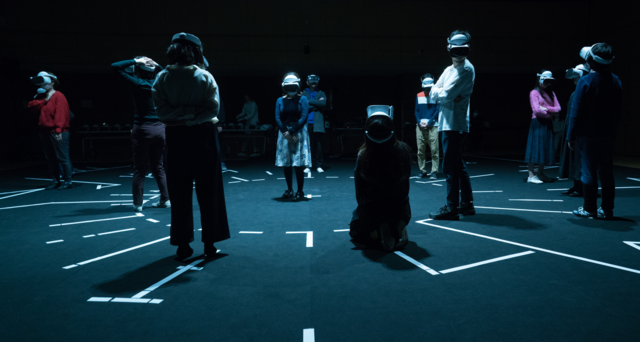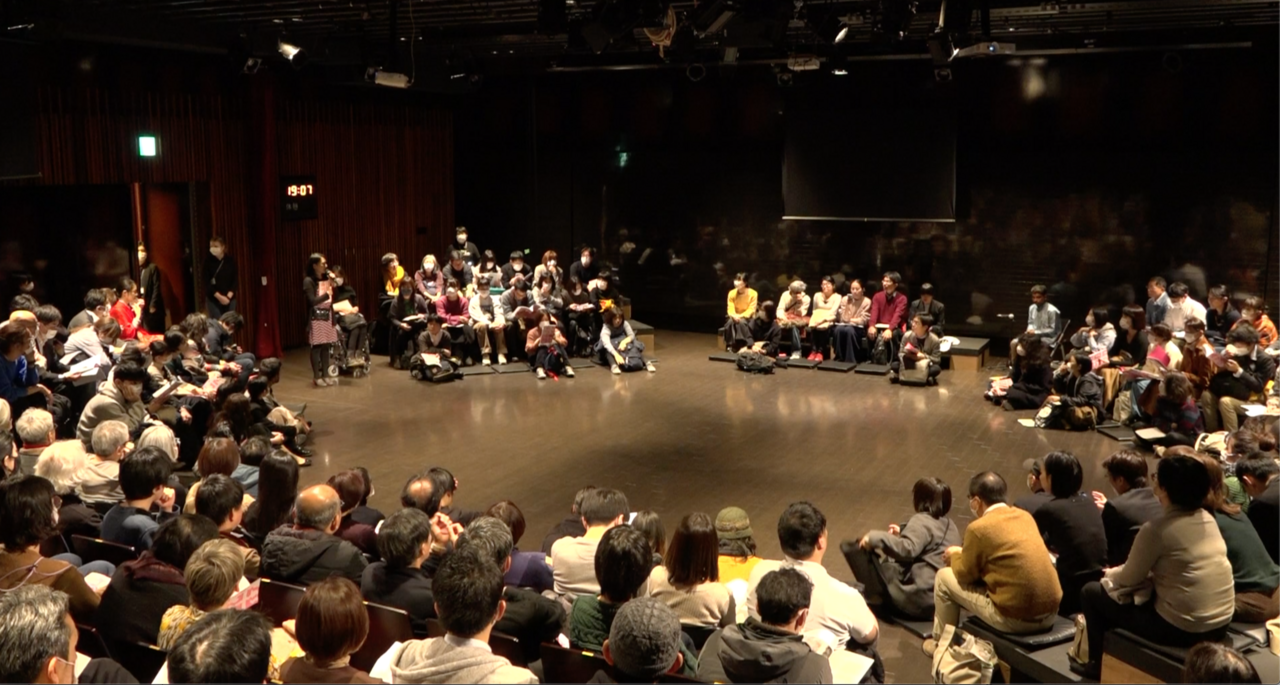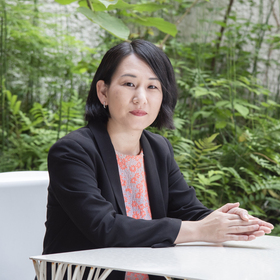Reviving and Transforming the Performing Arts, Toward New Inventions

An unfamiliar virus is spreading throughout the world. Our ordinary activities have been interrupted, and we humans are living our daily lives in exceptional circumstances. We confine our bodies to the “inside” and cut off contact with the “outside.” Borders are sealed off, and there is a significant restriction on movement. This state of emergency severely impacting politics, economics, industries, healthcare, education, and every other conceivable aspect of human activity. Culture and the arts are no exception.
In particular, the performing arts, which is the focus of this writer’s work, has suffered the most devastating blow of all the various art genres. Needless to say, this is due to the fact that live performances such as theater, dance, music, and popular entertainment rely on the interaction that occurs when people gather together, and that physical movement is an essential process in its planning, creation, distribution, and viewing. In other words, in the performing arts, physical “close contact” and “movement” are prerequisites, but in the current state of emergency, in which both are taboo, the performing arts have fallen into a temporary comatose state. In fact, all major music and theater festivals worldwide were canceled until the end of August. The Bayreuth Music Festival and the Avignon Festival, which are held in the summer, had to announce their cancellation more than three months in advance was because they could not rehearse without the unavoidable movement and close contact of performers and staff in the first place. In a condition where the basic metabolism has altogether ceased to function, the performing arts and theater culture have no choice but to remain in a comatose state in the ICU. However, their life could be extended if there were underlying infrastructure and special care (compensation), as is the case in European countries with advanced cultural policies. Be that as it may, in Japan, where such care, let alone testing, is not available in the first place, we could lose our lives. The survival of the performing arts is in jeopardy.
So, what are we to do? Like trying to find a cure without instructions, managers, producers, and artists who make their living in the performing arts desperately search for ways to cope with this crisis, putting themselves on the line for their own existence and survival. At the same time, to train for their recovery, they picture themselves using their own strength to take in a deep breath of the outside air which goes into the body for blood circulation the moment they wake from the coma. But the outside world that they return to would no longer be the same environment as before. Until the virus’s threat is eliminated, how can the performing arts survive when “close contact” and “movement” are restricted indefinitely?
Of course, I do not have a clear answer to this question at this point in time. As a matter of fact, the already tried-and-true methods of online performance distribution, careful audience management (mandatory temperature checks and mask-wearing), and financial support for the industry by the public and private sectors are only makeshift measures, and I believe that we require a Copernican-like shift in thinking and innovation to figure out how to survive in a world where the fundamental conditions for survival have changed. And it ought to be done in multiple places, by multiple artists and organizers at the same time. As different regions have different climatic and survival conditions, individual and original ideas are produced under various conditions, and a combination of these diverse proposals contributes to progress in the performing arts. In the words of biologist Shin-Ichi Fukuoka, “Viruses are an inevitable part of our lives, and therefore cannot be eradicated or eliminated.” This is because “it is likely that viruses are what accelerates evolution” (Shin-Ichi Fukuoka, “Dynamic equilibrium: The existence of viruses,” Asahi Shimbun, Published April 3, 2020). Now, the unfamiliar virus may partially destroy the performing arts, but it should encourage transformation and evolution in the parts that survive. I will share some fragments from what I have so far in my essay regarding the coming resurrection and recovery with this hope in mind.
Artistic performances, known as theatrical arts or the performing arts, which require a live presentation, have always been valued precisely because of their intimate nature. It is no exaggeration to say that the ultimate focus in the history of the performing arts in the 20th century has been on how to generate effective interactions inside and outside the theatre among performers, performers and the audience, and the audience itself. Significant production and theater concepts that have helped the performing arts evolve have been created from these efforts.
In his essay “Theatre and the plague” (1933), the French poet and theatrical theorist Antonin Artaud describes the plague as the alter ego of the theater; in other words, it is an analogy to highlight its essence by identifying it with the theater. “The action of the theater is as beneficial as the action of the plague,” and “it makes people see themselves as they really are, unmasking them, exposing falsehood, laziness, vulgarity, and hypocrisy” (p. 48, Antonin Artaud, “Theater and its double,” translated by Shinya Ando, Hakusuisha Publishing). In other words, the plague and theater are energies that shock society suddenly, destroying existing relational structures, and produce and reveal the essence of life by extreme methods. Following in the footsteps of Artaud, Shuji Terayama developed audience theory, actor theory, and theater theory aimed at creating plague-like interactions and spread his artistic practices like a virus in urban space. Through the power of plague/theater, the everyday life of the city can be instantly defamiliarized, and our perceptions can be refreshed to allow us to have a new experience of urban reality.
Now, almost a century after Artaud compared theater with the plague, we are witnessing an invisible virus that is rapidly transforming society, overturning existing values and norms, and creating an exceptional set of circumstances. Its speed and effect are so dramatic. The unfamiliar virus that threatens our existence paradoxically confronts us with the essence of life. This condition was also the very essence of the theater that Artaud was aiming for.
Now, however, we are at home. We cannot even gather at the theater to watch a new play, far from it. We are confined to our own private spaces, distancing ourselves from all physical interaction. Before we know it, we have not spoken to anyone all day, and nothing happens aside from typing data at a computer screen. As if in one of Beckett’s absurdist plays, we are in a perpetual state of waiting and self-imposed isolation.
This reclusive condition is the opposite direction of what contemporary art has been trying to achieve, which is a more outward and open state of being. To invite other people and places that are more different as foreign into a community that becomes closed and exclusive if left unchecked. Allergies are caused by a raging immune system that overreacts to foreign substances from the outside. The series of disputes that arose at the Aichi Triennale last summer were indeed an overreaction to different values and historical perspectives that manifested itself in countless calls of protest. Art has always sought out the external so that the immune system, which tries to eliminate foreign things, does not get out of control. That is why artists of all ages and countries have been invited from outside of the community and have always been needed to challenge the forces that turn inward.
But now, the borders are closed, the door of the room that isolates me from the outside world is closed and contact with the outside world has long since been restricted to the utmost extent. In the room, we lose our sense of time and lose touch with the external. Yesterday is the same as today, tomorrow will be the same again, and the cycle goes on. Despite the series of uncontrollable emergencies happening outside, I am always in my room, standing still like a plant.
In this space of self-isolation, we must invent a new operating system to recreate and change the self by taking in the outside world without rejecting it as a foreign substance. What are the theatrical mechanisms that connect us to the outside while we stay inside?
I have written something very abstract, but the reality is that in the months or years to come, when we step outside our rooms, in a world where viruses will probably never completely disappear, we will have to invent ways to coexist with them, to internalize their strength in a sense, and to create new interactions in society. Is it possible for us to create something that makes the isolated space we have closed off to ourselves exist as a vastly open external space for someone else living in a different time and space? The era of coexisting with viruses while searching for a new way of life has already begun. A time of crisis can also be a time of invention. One hundred years after Artaud’s prophetic analogy, we must now bring ourselves back to life by duplicating the power of the virus and the power of art, by challenging closed borders and all kinds of boundaries, by reconnecting the internal with the external and the external with the internal. It will be the first step in a long, long transformation process with our survival at stake as we enter the age of coexistence with viruses.
Postscript

Director’s address before the opening performance of Theatre Commons ‘20 on February 27, 2020.
At the time of writing this piece, the editorial department had originally asked me to write a “Field Report on Confronting the Coronavirus Crisis.” Theater Commons ‘20 (open from Feb. 27 to Mar. 8, 2020), for which I am the executive committee chairman and director, was one of the few cultural events that were held after the government’s request to refrain from large scale events, so I understand that the request was made to include the details of those difficulties. However, since the risk level is so different now than it was two months ago, I have written the above essay more for the future than as a field report. As for the report from the site of the Theatre Commons ‘20, I would like to add a complete summary of the main points as follows.
Switching to the Online Format
On February 26, the day before the event’s opening, the government issued a request to refrain from large-scale events, but even before that, a partial switch to online events was considered. On the 26th, the long interactive speech events, workshops, and reading performances were changed to run online. This major change in direction was made possible by the cooperation of Neo-logue Inc., headed by Daisuke Tsuda, who generously provided us with the resources of equipment, venues, and technology for online distribution. I want to take this opportunity to express my gratitude for their help.
Dialogue with the Audience
Before the opening performance of “Indian Rope Trick” on February 27, as the director, I appeared in front of the audience and verbally explained the organizer’s policy and response, asking for their understanding and cooperation. * See the above photo. I was very much supported by the audience’s warm applause and by the comments in the questionnaire saying that they wanted me to continue. The questionnaires were collected online as well as on paper so that we could share and analyze the audience’s responses with our staff as needed.
Response regarding Overseas Invitees
As for the artists invited from overseas, we had a Skype meeting with each of them to explain the situation in Tokyo. Decisions were made on an individual basis while respecting each of their wishes. Ultimately, the artists from India, Belgium, and Germany came to Japan, and after taking countermeasures, the theater performances were held as scheduled. Guests from the Netherlands, Taiwan, and Hong Kong who were scheduled to attend the speech events canceled their trips and presented via Skype.
Current Thoughts
Two months have passed since then. Looking back, it seems like a miracle that we could hold the 11-day Theater Commons festival at that time. And it was not a miracle backed by any extraordinary response or courage, but rather by a “silver lining,” so to speak. The number of invited performers from overseas happened to be few, and none of them were elderly, so the health risks were not so serious. The main theme was a form of theater in which the performers did not interact with each other, including a VR theater piece by Meiro Koizumi and a silent performance by Silke Huysmans and Hannes Dereere. The decision-making process was simple, and ultimately, as the chair of the executive committee, I was able to assume responsibility for it. This is the inherent nature of the Theatre Commons event, which is why we could be flexible in making decisions according to the situation and continue until the end. Still, if the start date had been a week later, it would have been a vastly different decision to make.
(April 21, 2020)


